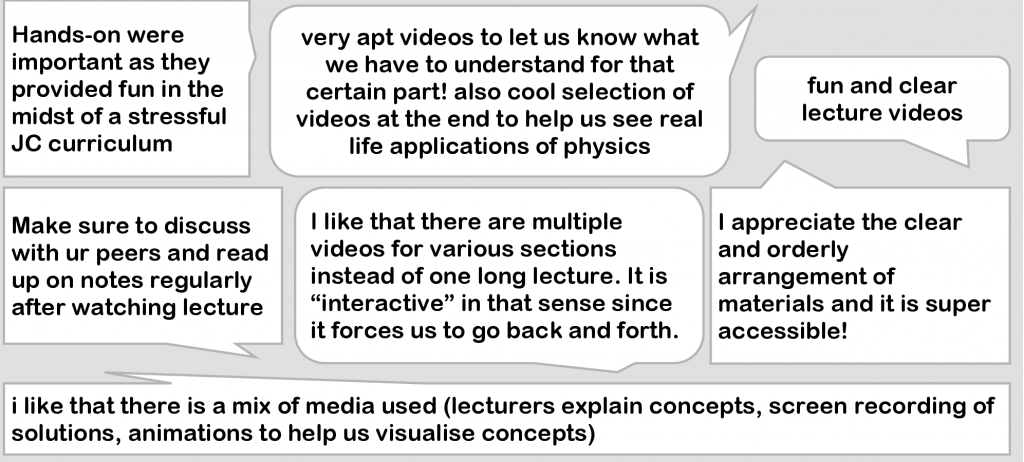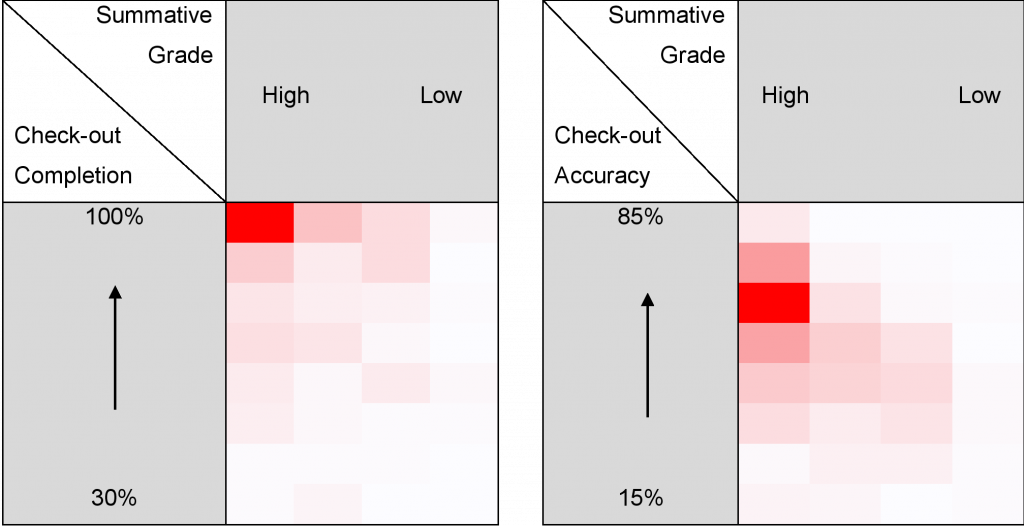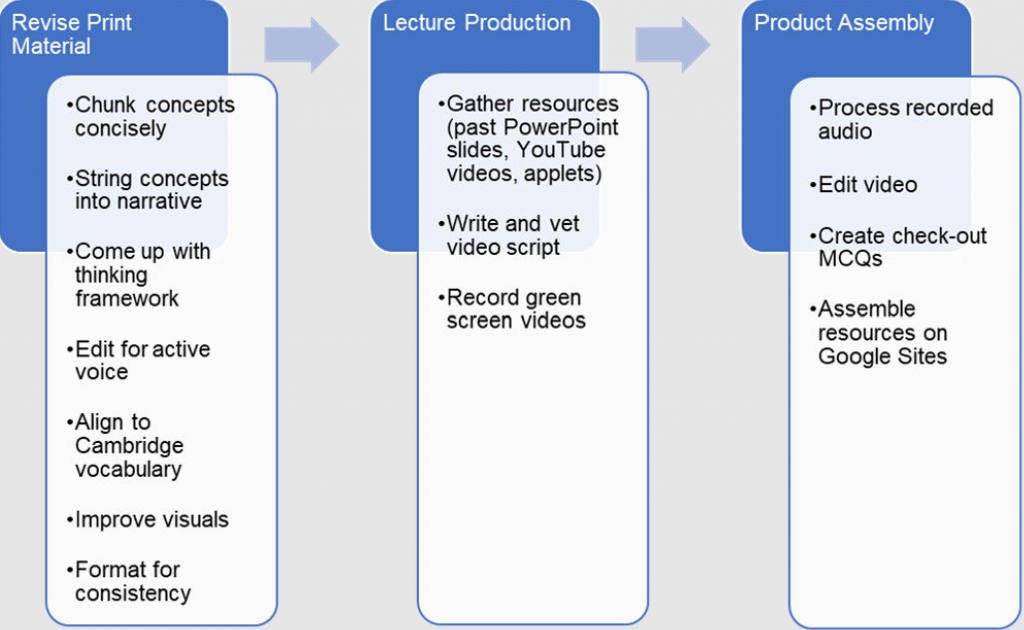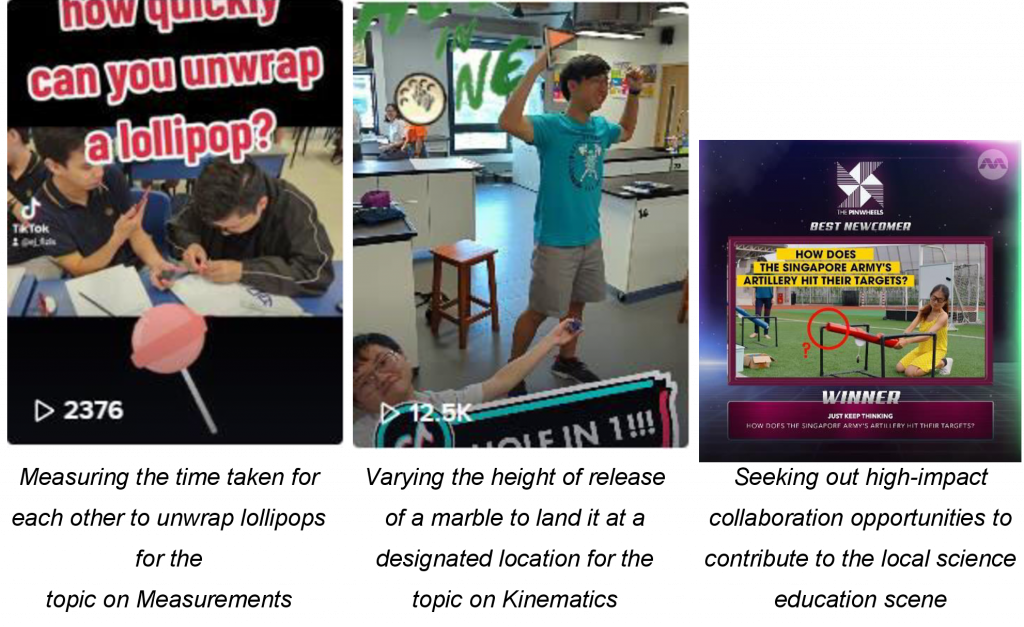Why Singapore’s English Teachers Should Embrace Singlish, Not Fight It
Is it time for Singaporean educators to embrace Singlish as a legitimate learning tool? What the Research […]
Read More
Contributed by Ngiam Song Wee, a Math and Science primary school teacher, for SingTeach Virtual Staff Lounge
The key concept behind blended learning is in integrating classroom face-to-face learning experiences with online learning experiences thoughtfully. Although blended learning has been acknowledged as a highly effective and low-risk approach, and “the single greatest unrecognized trend in higher education today” (Garrison & Kanuka, 2004), it took a global pandemic for institutes of higher learning to break away from conventional lecture formats. The COVID-19 pandemic served as a catalyst for change to break away from the traditional large group live lecture modality, and Eunoia Junior College (EJC) Physics teachers aimed to seize the moment to enhance our students’ learning experiences.
We adopted the in-class flip model, where students used their own devices to access video lectures, similar to Massive Open Online Courses (MOOCs) such as edX and Coursera, during scheduled hours (see Figure 1). Each lecture comprises short videos, example problems that students were encouraged to solve collaboratively, “Khan-style” hand-written explanations with narration on the thought processes behind the solution, and where applicable, simulations alongside other nuggets of information relating to real-world contexts. You may wish to view this video here for a glimpse into the students’ learning experience when accessing the lectures.

Figure 1. Our MOOC was assembled using Google Workspace elements.
We want our students to become more self-reliant in mastering Physics and to view teachers less as knowledge providers. This desire aligned well with the principles of “Active Learning”. Active learning is a lesson design mindset that emphasizes engaging students directly in the learning process. Instead of just passively receiving information (such as through lectures or reading assignments), students are active participants, often through activities such as discussions, problem-solving, case studies, or using simulations (Bonwell et al., 1991).
However, we also recognized the potential drawbacks of active learning: students may feel they’re learning less due to the increased cognitive effort required. This perception could negatively impact motivation, engagement, and self-regulation (Deslauriers et al., 2019). To counter these risks, we proactively monitored students’ overall well-being as we roved during lectures (see Figure 2) and consistently shared positive messages and effective learning strategies at the cohort level.

Figure 2. Typical sights and sounds as Physics teachers rove around during lecture time-slots.
In the Singapore JC context, there was limited literature on Active Learning and blended learning best practices. To understand if the recommendations from literature were applicable in the local JC context, we collected data through check-out MCQs at the end of each lecture. Check-out MCQs not only provided students with formative feedback (see Figure 3), it also allowed teachers to monitor student progress.

Figure 3. Through check-out MCQs, students can now see the completion statistics individually and aggregated at the class level.
We conducted cohort-wide surveys and focus groups with Physics representatives during the course to gauge student reception, identify pain points, and understand revision preferences (see Figure 4). This also allowed graduating students to share advice for future cohorts. Our findings were consistent with existing literature (see Appendix A).

Figure 4. Some verbatim feedback from students who first experienced the MOOC-style course.
In accordance with social constructivism, students valued peer and teacher interactions during lectures, as well as engaging with video-based content. This was supported by improved class-average performance in summative assessments throughout their JC journey.
Completion of check-out MCQs can indicate conscientiousness, which appears contagious within a class, emphasizing the importance of a positive learning environment. It may be worthwhile for us to work with colleagues who teach the same class in enculturating healthy class norms.
Individual performance on check-out MCQs reflects content mastery for each particular lecture. However, as the MCQs assess an individual student’s understanding on content that was introduced in that particular lecture, it does not provide information on whether the student can perform synoptic information handling.
To work towards a clearer understanding, we aggregated the accuracy and completion of the check-out MCQs across all the topics and compared the distribution against a summative assessment grade (see Figure 5).

Figure 5. Majority of students who performed well at summative assessments were those who completed all the check-out quizzes, but not necessarily answering all such quizzes with very high accuracy.
The heat maps of completion rates and accuracy of the check-pit MCQs suggest that long-term success relies on (i) conscientiousness (evinced by the completion of check-out MCQs) and (ii) learning from mistakes (with a notable heat signature at 65% accuracy). This would then be consistent with espoused learner traits of having good executive functioning skills as well as adopting a growth mindset.
Designing the course required significant effort to align video lectures while at the same time revising existing print materials to bring about more intentional segmenting, signalling and weeding out (SSW) of extraneous cognitive load. SSW is purported to improve overall knowledge acquisition of novice learners learning from instructional videos (Ibrahim, et al. 2011). The Physics unit drew strength and encouragement from students’ appreciation concise, clear and well-structured learning materials in sustaining the effort throughout the entire syllabus while producing the accompaniment videos concurrently.

Figure 6. We revised our resources in three stages in order for the print material to align nicely to the flow of the video lecture for that topic. This process was repeated across all topics in the syllabus.
The iterative process of revising our resources (see Figure 6) led to cohesive visuals and frameworks. This further reduces the cognitive load and enables students to easily access information and ask questions asynchronously. This consistency allows students to get down to work with less effort for future topics.
Throughout the process, the team grew from strength to strength and we noticed the following healthy dispositions taking form:
In blended learning, the intentional design of having in-person and online elements influence each is a key concept. In particular, learners should be able to engage with the online elements (see Figure 7) at any place, any time and at a pace of their desire. Providing EJC Physics students with a set of comprehensive and accessible T&L material fostered psychological safety for teachers and students, giving both parties the assurance and confidence to “do” more Physics and partake in the “Joy of Learning’.

Figure 7. Both students and teachers can find space to enjoy the process of teaching and learning Physics. We captured some of these moments over TikTok and YouTube. Click here, here, and here to view the videos.
References
Garrison, D. R., & Kanuka, H. (2004). Blended learning: Uncovering its transformative potential in higher education. The Internet and Higher Education, 7(2), 95–105. https://doi.org/10.1016/j.iheduc.2004.02.001
Bonwell CC, Eison JA (1991). Active Learning: Creating Excitement in the Classroom (George Washington Univ, Washington, DC).
Deslauriers, L., McCarty, L. S., Miller, K., Callaghan, K., & Kestin, G. (2019). Measuring actual learning versus feeling of learning in response to being actively engaged in the classroom. Proceedings of the National Academy of Sciences, 116(39), 19251–19257. https://doi.org/10.1073/pnas.1821936116
Ibrahim, M., Antonenko, P. D., Greenwood, C. M., & Wheeler, D. (2011). Effects of segmenting, signalling, and weeding on learning from educational video. Learning, Media and Technology, 37(3), 220–235. https://doi.org/10.1080/17439884.2011.585993
Cooper, A. Z., & Richards, J. B. (2017). Lectures for adult learners: Breaking old habits in graduate medical education. The American Journal of Medicine, 130(3), 376–381. https://doi.org/10.1016/j.amjmed.2016.11.009
Lawson, T. J., Bodle, J. H., Houlette, M. A., & Haubner, R. R. (2006). Guiding questions enhance student learning from educational videos. Teaching of Psychology, 33(1), 31–33. https://doi.org/10.1207/s15328023top3301_7
Guo, P. J., Kim, J., & Rubin, R. (2014). How video production affects student engagement. Proceedings of the First ACM Conference on Learning @ Scale Conference. https://doi.org/10.1145/2556325.2566239